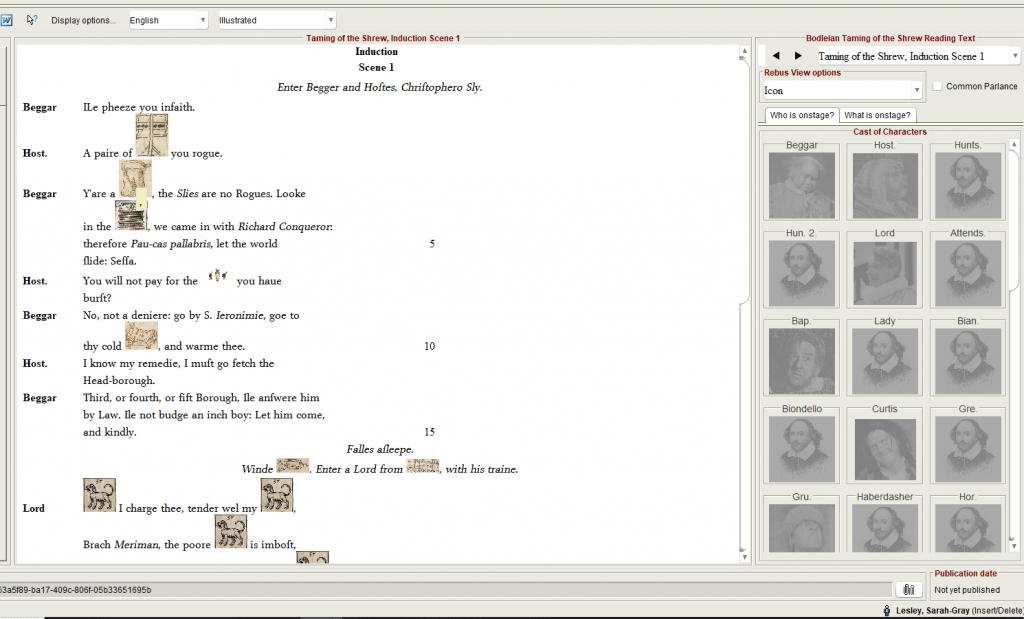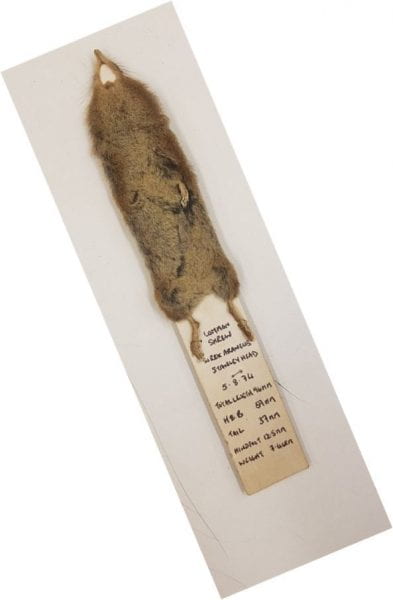Beshrew Me! Critical Editions for Digital Analysis and Research (CEDAR)
Ellen Mackay Associate Professor of English and Chair of Theatre and Performance Studies (TAPS), University of Chicago
Pamela Allen Brown Professor of English, University of Connecticut, Stamford
Frances Dolan Distinguished Professor of English, University of California, Davis
Tara Lyons Associate Professor of English, Illinois State University
Kirsten Sword Independent scholar (formerly Assistant Professor of History, Indiana University)
Victoria Yeoman Assistant Professor of English, Seneca College, Toronto
Sarah-Gray Lesley PhD Candidate in English Literature, University of Chicago
Supported in part by funding from the Neubauer Collegium for Culture and Society.
Whereas OCHRE serves its archaeology clients by providing a domain in which to offer multiple explanations and clarifications of texts that are hard to extract from their material environments, Beshrew Me! uses the platform a take a text in a fairly limpid state and lift its complex and dense material environment back into view. The English culture of devices, ciphers, hieroglyphics, points to a practice of compressed signification that the print disposition of the play doesn’t capture well. OCHRE is devised to handle this kind of signification.
Beshrew Me! is a reimagining of the digitized early modern text and the variorum edition through the affordances of the OCHRE database. OCHRE’s logic of reuse and collocation, and its distinctions between epigraphic and discursive textual properties, has opened new pathways to consider our primary text, The Taming of the Shrew, in relation to its non-semantic features—from the errors on the printed Folio page (rendered into the variorum text) to exact calculation of characters’ stage and/or speaking time. This edition, then, does not try to produce the most “legible” copy to the modern eye, but rather considers the printing errors, the misspellings, or white space on the page as legible features in and of themselves.
This line of inquiry has led Beshrew Me! to become invested in the non-semantic elements within Taming of the Shrew. We ask: What gestures are unmarked but implied within a given moment in the play? What props or objects are implicitly or explicitly on stage? What clothes, goods, or ornaments are implicit in a character type, like the Tinker or the Lord? What common parlances are embedded within the text that speak to a larger atmosphere of a “language” or “script” of shrew-taming, domestic life, and early modern gender politics? In other words, Beshrew Me! looks beyond the text and beyond the author to consider what other “texts” are beneath the surface of the written word: What kind of work are non-explicit or unwritten gestures, objects, and turns of phrase doing within the text that we otherwise might not be able to see? Beshrew Me! works to fill the Shrew variorum with the early modern material, gestural, and idiomatic culture in order to produce a text that is not committed to reifying the primacy of the author and the singular text, but rather to locate the texts’ many origins within the robust things, sayings, and practices that surrounded it.
Rebus View: An example of one reading option in this digital variorum, this View literalizes our aim to prioritize the material-cultural over the textual by substituting the image of a word (taken from picture encyclopedias of the period) for the word itself. The Rebus View reasserts this project’s argument that objects have scriptive power over the playtext.

Rebus View of Taming of the Shrew
Common Parlance View: Highlighted in green are identified common parlance—or “proverbial sayings”—from previous Shrew variora. The Common Parlance option of Illustrated View allows the reader to click on the highlighted phrase and read additional information about the turn of phrase, including instances where this common parlance, or variations on this parlance, can be found in other early modern texts. Currently, Beshrew Me! is working to identify common parlances that have been up to this point unidentified by previous Shrew editors, using the early modern digital resources like Early English Books Online (EEBO), English Broadside Ballad Archive (EBBA), and Early Print.

Common Parlance View of Taming of the Shrew
Student assistants
- Josephine Dawson (2021- ) Undergraduate Research Assistant (UChicago), Common Parlance
- Caroline Galt (2021- ) Undergraduate Research Assistant (UChicago), Scriptive Objects
- Stephanie Liu (2021- ) Undergraduate Research Assistant (UChicago), Web Design
- Jake Schroeder (2021- ) Undergraduate Research Assistant (UChicago), Gestural Iconography
- Jode Sparks (2021- ) Undergraduate Research Assistant (UChicago), Sound and Noise
- Julia MacKay (2020- ) Material Culture and Design
- Samual Hebert (2020-2021) Undergraduate Research Assistant (UChicago)
- Siri Lee (2020-2021) Graphic and Web Design Specialist
- Ashleigh Cassemere-Stanfield (2017-2019) Ph.D. student of English (UChicago)
- Arianna Gass (2017-2019) Ph.D. student of English (UChicago)

Undated shrew bookmark, Potteries and Art Museum of Stoke-on Trenk, UK.
